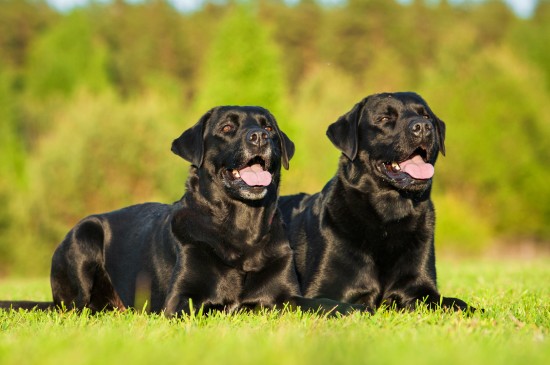

In female dogs, the nipples are of course designed to provide milk and colostrum for puppies, and the mammary glands, which lie in rows above the dog’s nipples, are responsible for producing this milk for the pups. The mammary glands themselves can also develop tumours that may be either malignant or benign, and this is something that owners of female dogs, and particularly dogs used for breeding or that are unspayed for another reason, should be aware of.
In this article, we will look at mammary gland tumours in bitches in more detail, including the risk factors for their development, how to identify a problem, and what can be done to treat them. Read on to learn more.
The mammary glands are, as mentioned, glands present above the nipples of female dogs, and that are responsible for receiving chemical signals from the pituitary gland that tells the body to produce colostrum and milk in preparation for an impending litter.
While male dogs have nipples, their mammary glands are inactive, other than in very rare cases where the dog’s pituitary gland sends confused messages that can lead to lactation in males.
In the female dog, particularly in unspayed bitches, tumours can and sometimes do develop in the mammary glands themselves, and this type of tumours is one of the more common types that occur in female dogs. These tumours can be either malignant or benign, and it is not definitively known why they develop, although the root cause is highly likely to be due to a combination of both hereditary traits and a hormonal imbalance.
Mammary gland tumours almost exclusively affect female dogs, although in very rare cases, they can affect males too. Unspayed bitches are at particularly high risk for such tumours, and they are much less common in spayed bitches.
Certain breeds and types of dog too seem to present with mammary gland tumours more often than others, including the English setter, cocker spaniel, and Maltese terrier.
It can be challenging to identify mammary gland tumours in the dog, which is one of the many reasons why scheduling an annual health check with your vet is so important. Added to this, because the mammary glands lie above the nipples, tumours do not always appear obvious around the nipples themselves, and can be hard to identify even if you examine the area around each nipple carefully.
In some cases, the skin around the nipples may change in texture and appearance, or you may be able to feel or identify small masses around one or more of the nipples-around half of all presentations of tumours involve multiple tumours, and not just one on its own.
Inflamed or sore nipples, or any other changes around the nipples themselves may indicate a problem too.
If you spot any sort of change or problem around your female dog’s nipples, particularly if she is unspayed, get your vet to check it out right away.
Mammary gland tumours are not always cancerous or malignant-benign tumours are also very common, and around 50% of all tumours are in fact benign.
If you can identify a mass or lump under the skin that can be moved, this is highly likely to be benign, where more solid masses that are immobile and fixed in position are more likely to be malignant.
Malignant tumours themselves can come in various different forms, including fibrosarcoma, osteosarcoma, and cystic adenocarcinomas, among others.
The sooner your vet examines your dog and so, can develop a diagnosis and look at treatment options, the better the prognosis will be for affected dogs. Your vet will need to run some tests including blood and urine panels and diagnostic imaging in order to do this, as it is important to find out whether the tumours are malignant or benign, and if malignant, what form they take.
Generally, surgical removal of all of the present tumours is the preferred method of treatment for malignant mammary gland tumours, but how your vet goes about this will depend on a range of factors, such as the location of the tumours, how large they are, and how aggressive they are. Removal may target simply the tumour or tumours only, or the tumours and also, the mammary glands and associated lymph nodes themselves.
Bitches that have had malignant tumours removed already are more likely to develop more in future, which is why removing the mammary glands themselves is often the preferred option. Spaying the bitch can greatly help to prevent further incidences of mammary gland tumours too.
There are hereditary risk factors for mammary gland tumours in dogs, and so if the bloodline of a dog is dotted with bitches that suffered from tumours, it is unwise to breed from the dog.
Spaying the bitch promptly when she becomes old enough is widely accepted as the most effective way of greatly reducing the likelihood of tumours developing in later life.
 Keeping Cats Out Of Certain Parts Of Your Garden
Keeping Cats Out
Keeping Cats Out Of Certain Parts Of Your Garden
Keeping Cats Out
 Interesting Facts About Rabbits
Interesting Facts
Interesting Facts About Rabbits
Interesting Facts
 Can Two Un-neutered Male Dogs Live Happily Together Without Fighting?
Can Two Un-neuter
Can Two Un-neutered Male Dogs Live Happily Together Without Fighting?
Can Two Un-neuter
 Five Smart New Year’s Resolutions For Cat Owners
Five Smart New Ye
Five Smart New Year’s Resolutions For Cat Owners
Five Smart New Ye
 Keeping Indoor Cats Happy When They Are Alone
Keeping Indoor Ca
Keeping Indoor Cats Happy When They Are Alone
Keeping Indoor Ca
Copyright © 2005-2016 Pet Information All Rights Reserved
Contact us: www162date@outlook.com